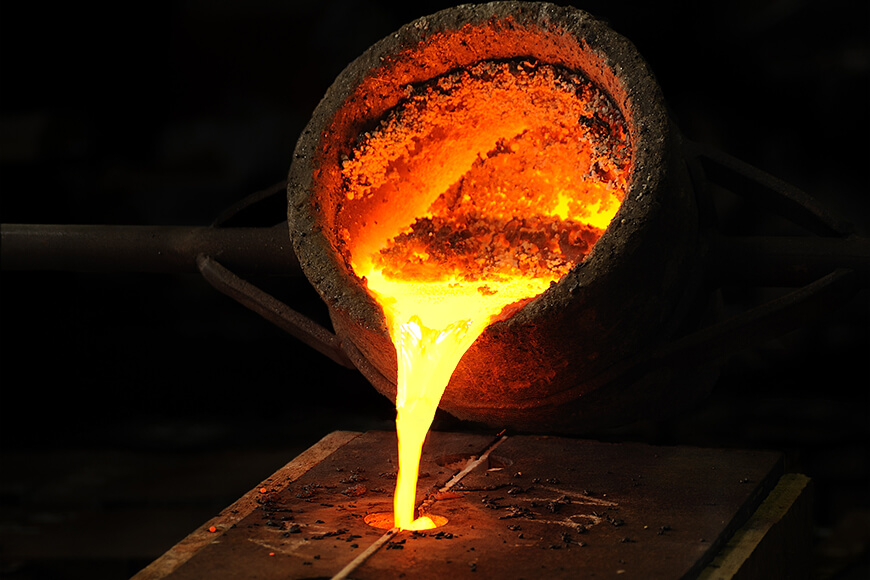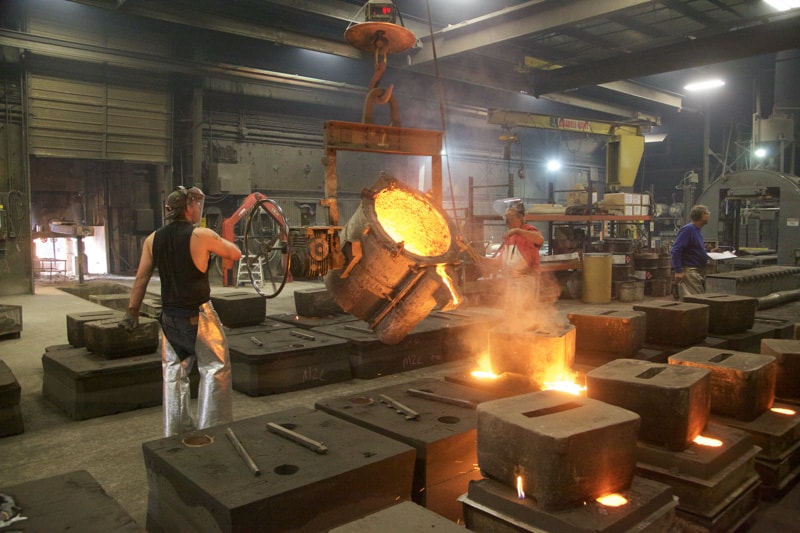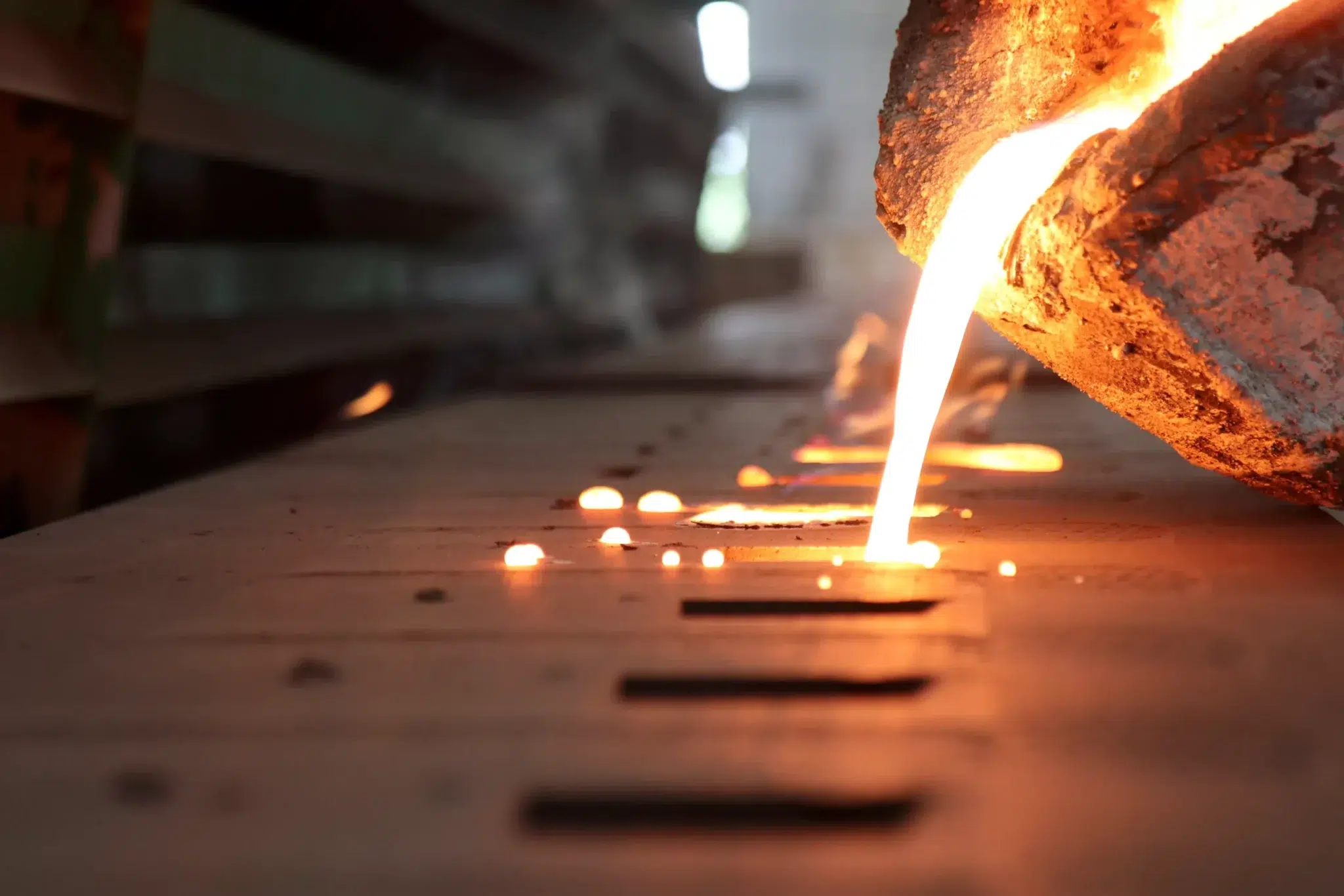A Beginner’s Manual to Casting Foundry Processes and Methods
Wiki Article
Discovering the Vital Function of Casting Foundry in Modern Manufacturing
Casting foundries are crucial in modern production, offering necessary components throughout diverse markets. Casting Foundry. Their capacity to create complex, light-weight components meets the growing needs for efficiency and top quality. The landscape is evolving, influenced by technical improvements and sustainability issues. As these foundries browse obstacles and chances, their future role in manufacturing continues to be unpredictable. What strategies will they utilize to adapt and thrive in this dynamic environment?The Basics of Spreading: Recognizing the Refine
Casting has been a basic manufacturing process for centuries, its concepts stay vital to modern sector. This procedure includes putting a liquid material, usually metal, right into a mold and mildew to produce a details form. The mold is designed to develop the preferred output, which solidifies as it cools. Trick phases in casting consist of pattern making, mold and mildew production, putting, and finishing. Each phase requires cautious interest to information, making certain that the final item satisfies high quality and dimensional requirements.The flexibility of Casting enables for the manufacturing of complex geometries that would be difficult or difficult to accomplish with various other making techniques. Furthermore, Casting can suit a selection of materials, consisting of polymers and steels. This versatility makes it an essential strategy for markets varying from automotive to aerospace, supporting innovation and performance in the development of components that satisfy the demands of modern applications.
Types of Casting Techniques and Their Applications
Casting methods are varied, each tailored for certain applications and material demands. Sand Casting is just one of the oldest approaches, suitable for huge components and complicated geometries, utilizing sand mold and mildews. Financial investment spreading, recognized for its accuracy, is ideal for elaborate designs and is generally utilized in aerospace and clinical industries. Die spreading, often utilized for high-volume production, enables fast production of smaller components with excellent surface area coating, normally in light weight aluminum or zinc alloys. Covering Casting offers an equilibrium between both, giving great details and excellent stamina, making it prominent in automobile applications. Irreversible mold casting, used for non-ferrous metals, delivers a tighter dimensional tolerance and far better mechanical homes. Finally, centrifugal Casting is efficient for developing cylindrical components, frequently discovered in pipelines and tubes - Casting Foundry. Each method offers distinct functions, emphasizing the adaptability and importance of Casting in modern-day productionThe Influence of Casting Shops on Market Advancement
As industries undertaking for higher performance and product quality, the duty of casting foundries becomes increasingly pivotal in driving development. These centers offer as the foundation for generating intricate elements throughout numerous fields, consisting of vehicle, aerospace, and power. By leveraging advanced Casting techniques and materials, shops add to the advancement of lighter, stronger, and more long lasting products that meet developing customer demands.
In addition, factories promote making use of sustainable practices, such as recycling metal and minimizing waste, which straightens with modern market requirements for ecological obligation. Eventually, the innovative capacities of casting foundries not only enhance manufacturing performance however also push whole sectors right into a future defined by technical development and sustainability.

Challenges Facing Casting Shops in a Modern Economy
While development remains to improve the manufacturing landscape, casting shops deal with a myriad of obstacles that threaten their operational feasibility. One considerable concern is the boosting competition from sophisticated manufacturing modern technologies, such as additive production, which can generate intricate parts with much less material waste. Furthermore, the rising and fall costs of resources, particularly metals, pose financial risks, affecting cost predictability. Labor scarcities even more intensify these challenges, as proficient employees come to be harder to find and keep amidst an aging labor force. Moreover, governing stress concerning exhausts and office security call for factories to buy costly upgrades, commonly straining minimal resources. The need for electronic transformation also looms huge, as several factories battle to take on Market 4.0 modern technologies that improve performance and information administration. Jointly, these obstacles compel casting foundries to adapt promptly or run the risk of obsolescence in a progressively open market.Sustainability Practices in Casting Foundries
Amidst the challenges facing Casting shops, the fostering of sustainability techniques has actually become an important technique for boosting functional durability and competition. Factories are progressively focusing on minimizing waste through effective resource administration, reusing scrap steel, and utilizing green products in their processes. The application of energy-efficient modern technologies is another critical facet, as it assists lower power consumption and carbon discharges.Lots of factories are embracing closed-loop systems to reduce water usage and reduce the ecological influence of procedures. Staff member training in sustainable practices cultivates a culture of environmental obligation, guaranteeing that all staff member are taken part in sustainability initiatives.
Integrating Modern Technology in Casting Processes
Incorporating advanced modern technologies right into casting procedures has come to be a crucial variable visit this site right here in driving performance and technology within foundries. Automation and robotics are significantly employed to streamline manufacturing, lowering labor expenses and minimizing human error. Advanced software program for simulation and modeling enables designers to forecast outcomes and optimize styles prior to physical manufacturing starts. Furthermore, the consolidation why not check here of 3D printing innovation considerably improves the prototyping stage, assisting in rapid growth and lowering preparations.In addition, real-time tracking systems making use of IoT tools enable factories to track performance metrics and identify possible issues early in the Casting process. This data-driven method not just boosts quality assurance yet also sustains maintenance approaches that avoid pricey downtimes. As a result, incorporating these innovations promotes a more active manufacturing atmosphere, permitting foundries to react quickly to market demands while maintaining high standards of quality and sustainability.
The Future of Casting Foundries in Manufacturing

The demand for high-performance and light-weight materials in industries like aerospace and automotive will drive technology within shops. Collaborations in between foundries and producers will likely enhance, promoting an extra incorporated supply chain that emphasizes rapid prototyping and modification. As digital makeover proceeds, shops might also utilize information analytics to maximize procedures and predict upkeep requirements, making sure competitiveness. Ultimately, the future of casting shops depends upon their ability to adjust to technological advancements and market demands while keeping high quality and cost-effectiveness.
Often Asked Concerns
What Materials Are Frequently Made Use Of in Casting Foundries?
The materials generally made use of in casting factories consist of steels such as light weight aluminum, iron, bronze, and steel, in addition to numerous alloys. Additionally, sand, resin, and ceramic are commonly made use of for molds and core production.How Do Casting Factories Make Sure Quality Assurance in Production?
Casting shops implement rigorous high quality control procedures, including routine find assessments, standardized screening, and adherence to sector qualifications. These methods assure that each product meets defined tolerances and efficiency requirements, consequently maintaining high levels of reliability and consumer fulfillment.What Are the Precaution in Casting Foundries?
Safety procedures in casting factories consist of the use of personal safety tools, proper ventilation systems, routine devices maintenance, staff member training programs, and adherence to safety laws to decrease risks related to molten steel handling and machinery procedure.
How much time Does the Casting Refine Commonly Take?
The Casting procedure usually takes several hours to a number of days, depending upon elements such as the complexity of the style, the products made use of, and the cooling time needed for the cast parts to solidify effectively.What Is the Role of Designers in Casting Foundries?
Designers in casting factories look after design, process optimization, and quality assurance. They assure that products meet requirements, troubleshoot production problems, and implement ingenious methods, inevitably adding to efficiency and the successful manufacture of steel parts.Casting factories are critical in contemporary manufacturing, supplying necessary components across diverse sectors. While advancement continues to reshape the manufacturing landscape, casting factories deal with a myriad of obstacles that threaten their operational practicality. In the middle of the difficulties facing Casting foundries, the adoption of sustainability practices has arised as an essential strategy for enhancing functional strength and competitiveness. In addition, real-time monitoring systems utilizing IoT gadgets allow foundries to track efficiency metrics and recognize potential issues early in the Casting process. The materials commonly utilized in casting factories consist of steels such as light weight aluminum, iron, bronze, and steel, along with numerous alloys.
Report this wiki page